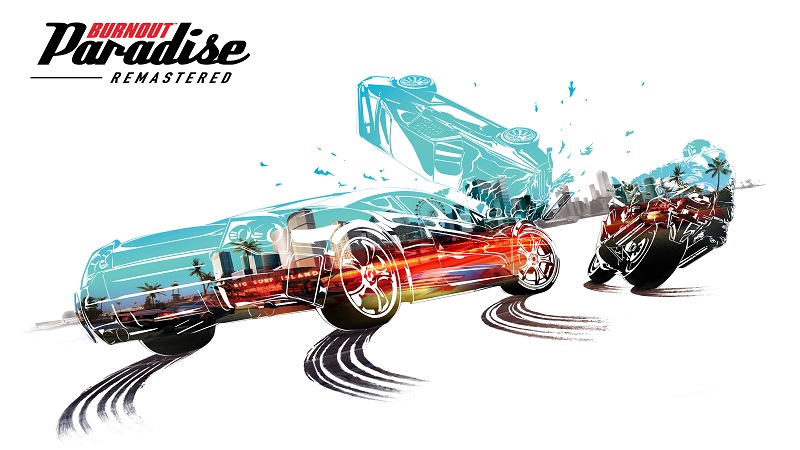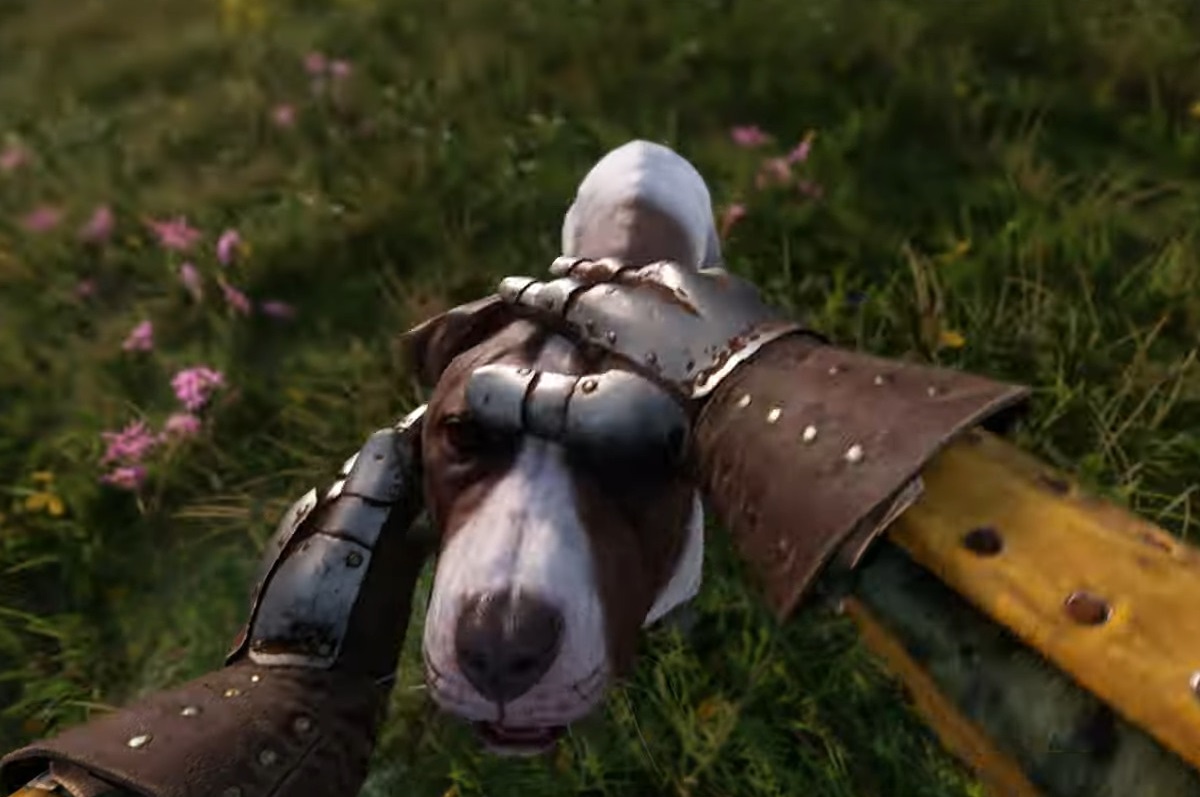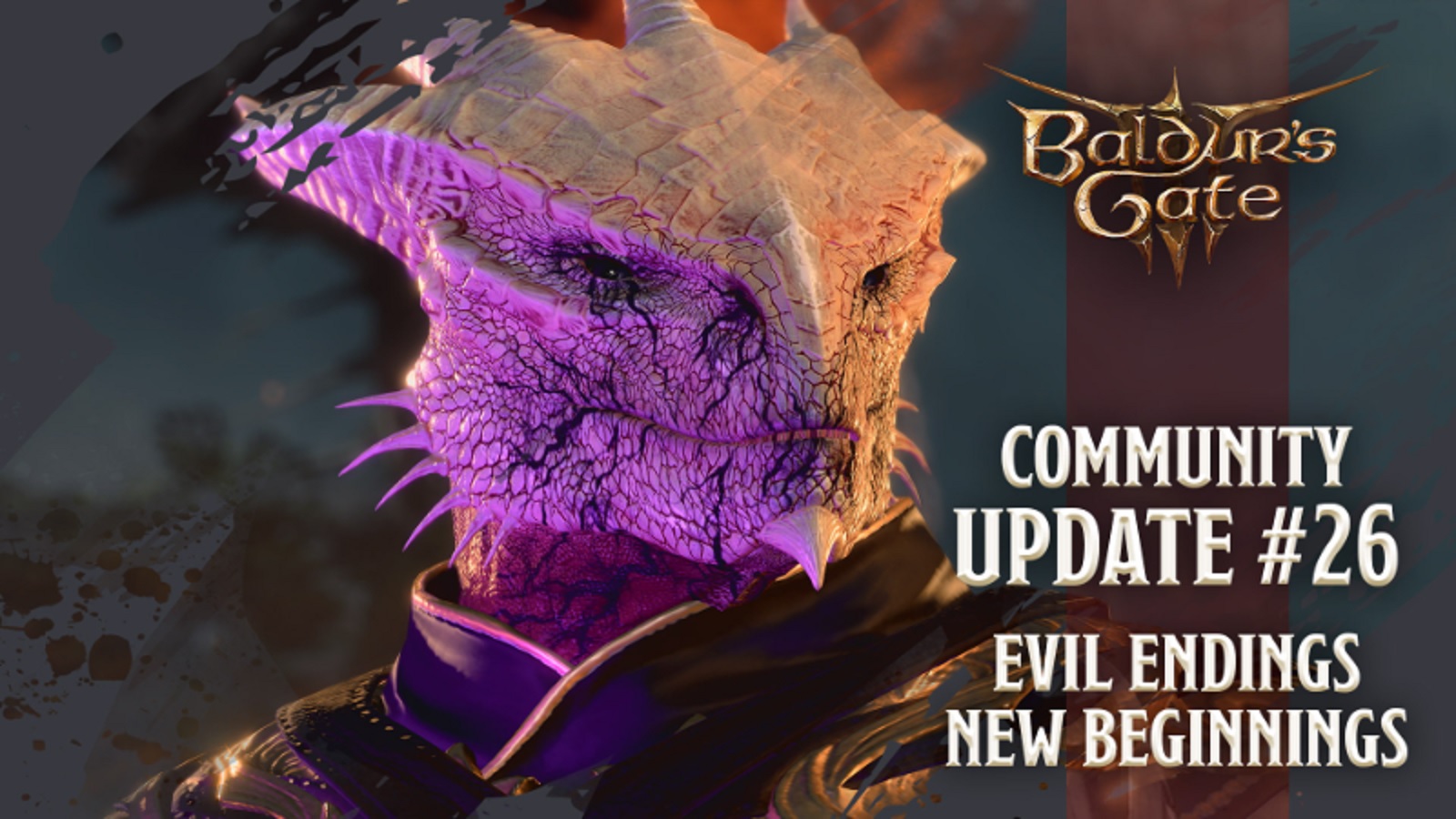Burnout Paradise Remastered is an arcade racer available from retail stores and for download from the PlayStation Store for the PS4. The Burnout series began on November 11th 2001 on PS2 before a sequel titled Burnout 2: Point of Impact was released on October 11th 2002 with both games developed by Criterion Games yet published by Acclaim. However, after Acclaim unfortunately disbanded; Criterion Games were quite positively saved as they were bought out by Electronic Arts along with their Burnout IP which resulted in the continuation of the Burnout series. Burnout returned to PS2 on September 7th 2004 with Burnout 3: Takedown, while Burnout Revenge released on September 13th 2005 with Burnout Legends releasing on the same day as a major game within two weeks of the PSP’s European launch. The Burnout franchise continued on March 6th 2007 when Burnout Dominator released on PS2 and PSP, although it was developed by EA UK as Criterion Games were hard at work developing Burnout Paradise which brought Burnout to PS3 for the first time on January 22nd 2008. Burnout Anthology packaged together Burnout 3: Takedown, Burnout Revenge and Burnout Dominator as a PS2 exclusive that only released in America on November 19th 2008, while Burnout Paradise received an Ultimate Box release that bundled all of the post-launch downloadable content together on February 6th 2009. Burnout Crash was released on September 20th 2011 as a Criterion Games developed spin-off from the crash mode contained within previous Burnout games as a digital download on PS3. Can Burnout Paradise deliver an engaging arcade racer 10 years on from its original release?
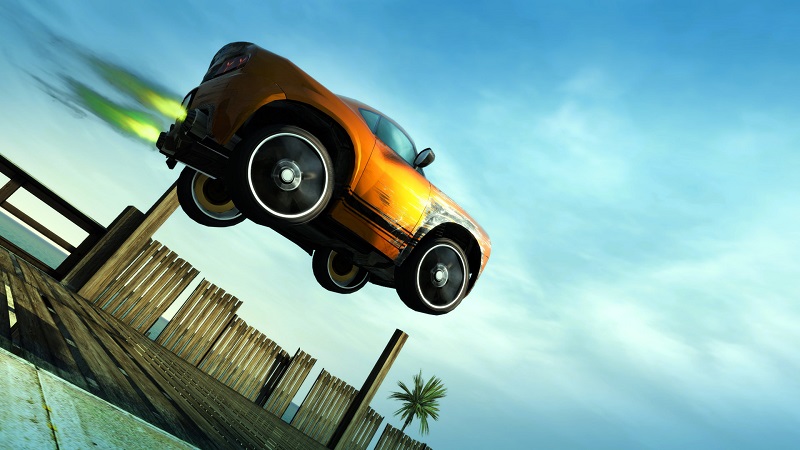
Burnout Paradise Remastered brings together a compilation of the vast open-world racing of Burnout Paradise combined with 8 downloadable content packs from the Year of Paradise that are already part of the game on the disc. The 8 downloadable content packs worth of post-launch content from when Burnout Paradise originally released comprises of the Big Surf Island environment, while Cops and Robbers provides a further online mode and police variations of 33 original vehicles and Party allows multiple players to participate in attempting to complete challenges via pass the controller local multiplayer gameplay. Elsewhere, Legendary Cars, Toys and Boost offers a total of 15 additional cars, while Cagney introduces further online modes, community vehicle decals and two more cars, alongside Bikes that in its own right adds around 10 hours of single player gameplay, lots of online multiplayer gameplay and 4 motorbikes.
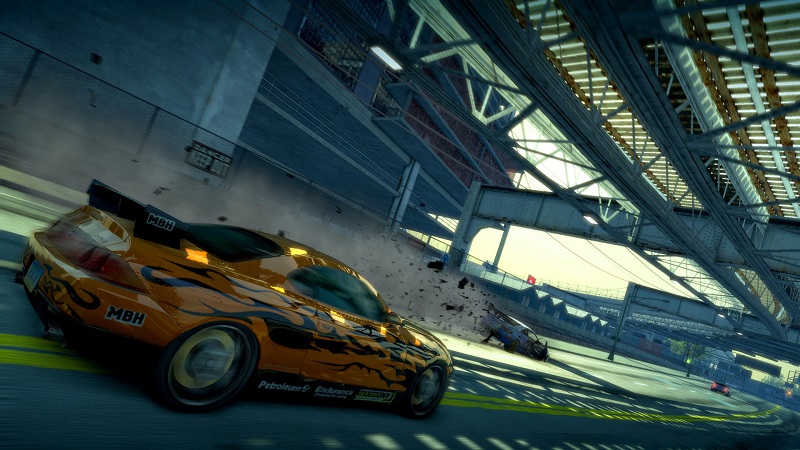
There are a multitude of event types to participate in such as races competing against 1 or 5 cars in anywhere from a short distance to a long distance point-to-point race, while in road rage the player has to takedown a certain amount of cars within 2 minutes; stunt run tasks the player with putting together massive jumps for big air, smashing through boards or gates, boosting for a faster speed, drifting, driving in oncoming traffic and more besides; marked man sees the player attempting to survive an onslaught of cars trying their best to take your car down until reaching a specifically designated location on the map; alongside burning route which requires the player to unlock a particular vehicle in order to set a time through the route’s time trial. Crash mode returns in the form of showtime in which the player can utilise the vehicle’s boost to continue bouncing their car, truck or van down the road into civilian cars to earn more points from the quantity of cars you make contact with, while a bus offers a multiplier. However, it does not end there as numerous activities are around every corner and straight such as competing in time trials from a few seconds in length through a single street for around 5 seconds or an entire route taking around 2 minutes in attempt after attempt to beat offline times or times set by players on a global scale for times and show times in road rules, alongside 400 gates and 120 billboards to smash through as well as 50 jumps to land and more besides. Motorbikes also have their own set of exclusive events such as the burning ride event which is a riff on burning route without having to use a specific bike, while midnight ride has the same time trial gameplay albeit at night time.
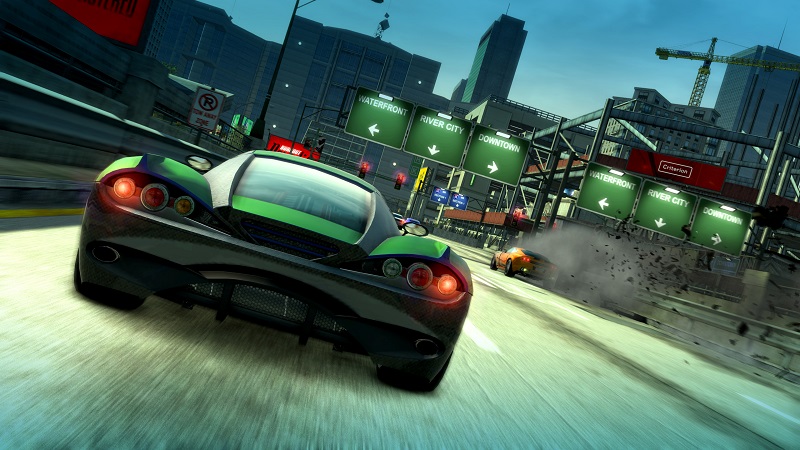
Burnout Paradise’s approach to XP and levelling up sees your driver’s licence start out as a learner’s permit which is gradually upgraded to the next level by winning an ever-increasing amount of events per class licence as you progress from learner’s permit to class D, C, B and A before ultimately earning the Burnout driving licence, while the bike licence has a different approach as players begin at 0% and work their way towards 100%. It is important to improve your driver’s licence as doing so will reward the player with a new vehicle and the new announcement of a car roaming around that can be taken down to be added to your collection of cars, while the progress in every event is effectively reset to allow players to utilise some of the events they have had success with towards gaining ground on reaching the next class of driver’s licence.

There are no officially licensed cars, although car design is absolutely based on the exterior designs of famous cars such as the Montgomery Hyperion models are reminiscent to a Jaguar E-Type, while the Carson GT Concept has a striking resemblance to the Chevrolet Camaro and Watson Roadster is similar to a Lotus, alongside the Krieger Racing WTR that closely resembles Lewis Hamilton’s world driver’s championship winning McLaren F1 car. Each car has unique attributes including the quality of speed, boost and strength. Cops and Robbers produces 33 police vehicle variants of cars from throughout Paradise City. There are over a dozen toy cars including the Hunter Toy Spirit based on the Hunter Manhattan Spirit which is aesthetically every bit an Ecto-1 from Ghostbusters, while the Toy Hunter Takedown 4×4 that looks akin to a monster truck and a toy F1 car. Burnout Paradise’s racing action does not just focus on four wheels as there are 4 seriously high powered motorbikes, while there is also a toy bike that each feels as realistically thrilling as every car, truck and van.
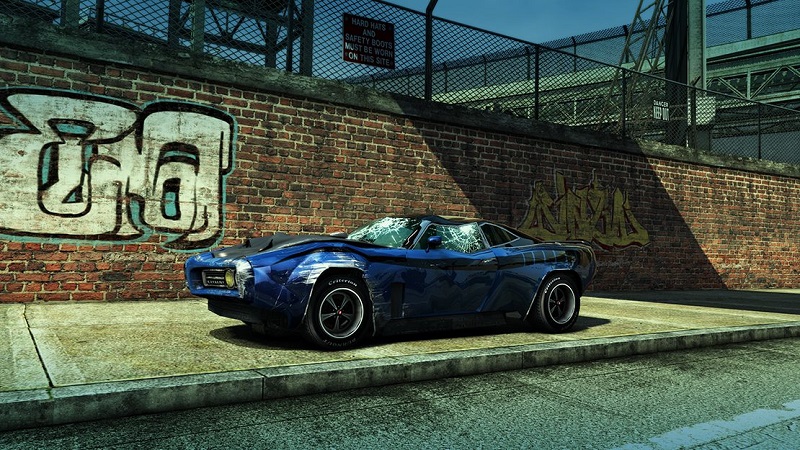
The first car available is the Hunter Cavalry which is a stunt class car, but is nevertheless a reasonable car to start with. As your first car is looking quite worse for wear due to being a wreck; players will soon discover the importance of auto repair shops that will immediately repair your vehicle, while adding a previously unused auto repair shop to your map for future reference when requiring a repair within that vicinity. Your currently chosen vehicle can be swapped for another by driving into the junkyard which contains every vehicle the player has unlocked and a paint job can be reapplied to a vehicle by selecting the colour when choosing the vehicle at a junkyard or driving through a paint shop after having chosen the vehicle.

Every car has a boost type that showcases the car category including speed vehicles that allows burnouts and boost chains to be performed, while stunt vehicles allow players to boost regardless of how full the boost bar is, alongside aggression vehicles can engage the boost at any given moment with a boost bar that increases in size for every successful takedown on competing cars, but reduces when your car crashes or is taken down. Meanwhile, boostless vehicles such as motorbikes, Nakamura Rai-Jin Turbo RWD and Hunter Olympus make up for not having the capability to boost by naturally having quicker acceleration, while locked boost cannot be turned off once engaged without crashing or braking to completely stop the Carson Extreme Hot Rod, alongside the switchblade boost which sees the Montgomery Hawker Mech having the enviable ability of switching at will between speed, stunt and aggression boost types.

Burnout Paradise Remastered’s racing takes place in the diverse environments of Paradise City which are spread throughout five unique locations referred to as districts including Downtown Paradise, Harbor Town, Palm Bay Heights, Silver Lake and White Mountain. Every district has sub-districts that even contain landmarks such as Downtown Paradise comprising of four sub-districts including the Waterfront, River City, Downtown and Motor City in which the Paradise City Town Hall and Museum of Art in River City, while a large chrome statue of a man holding a flag is known as the symbol of the city situated at the Waterfront, alongside many more landmarks within every sub-district. A further location included in Burnout Paradise Remastered is Big Surf Island that was previously released as downloadable content for Burnout Paradise. Big Surf Island features five sub-districts including Midtown, North Beach, Paradise Keys Bridge, Perren’s Point and South Coast in which the landmarks include a lighthouse, a resort, hotels and more besides. Every sub-district contains plenty of shortcuts for strategic racing such as large jumps that require enough pace from your vehicle in order to jump from one ramp and land on the other, an alternative route situated beyond a gate that can be smashed through or even experimenting with utilising different roads to shave precious seconds off your time when racing short or long distances.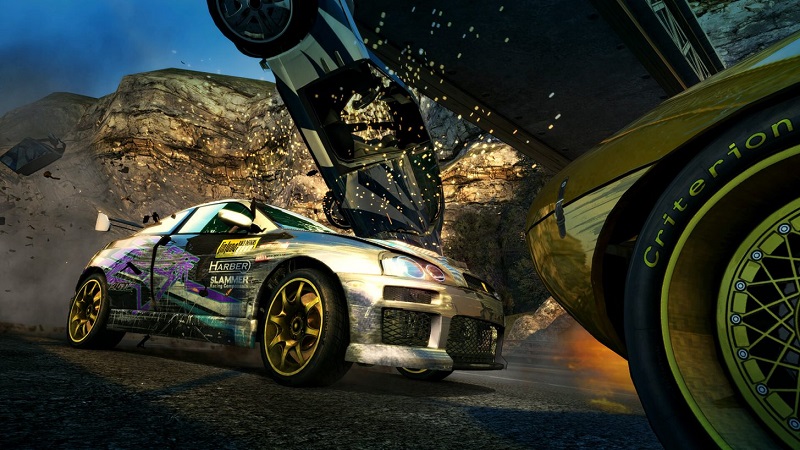
Burnout Paradise’s damage modelling remains one of the best in racing games as crashes result in elements of bodywork flying through the air during a slow motion crash camera that showcases excellent particle effects, while high speed crashes can also end in losing one or both of the front tyres, especially when driving a car reminiscent to that of an F1 car.
Burnout Paradise’s arcade racer handling has always been pretty much spot on as every car, truck, van and motorbike handles differently due to their unique attributes. Despite Burnout Paradise Remastered being an arcade racer; physics are still a big factor such as the weight of your chosen vehicle playing a part in acceleration in a realistic sense as the heavy nature of a truck or van will reduce its maximum speed and increase the length of time required to steer into a corner in comparison to cars and motorbikes.
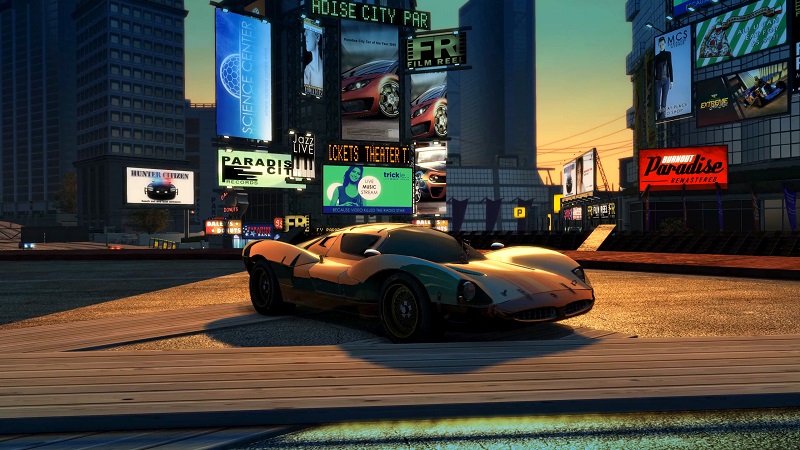
Burnout Paradise’s day-night cycle is still quite impressive as it allows the player to choose a constant time of day at sunrise, mid-day, sunset or midnight which it will permanently remain, while there are further options to experience the transitioning from each of the four periods of the day through night within a day lasting 24 minutes, 48 minutes, 2 hours or 24 hours, alongside the ability to match the time of day to your very own real-world local time. No matter which length of day you choose; the day-night cycle showcases a total contrast in skies, lighting and even dynamic casting of shadows from structures, objects and foliage as sunrise becomes mid-day, mid-day progresses into sunset and sunset transitions into midnight before looping back around again in what is a graphically authentic depiction of a day-night cycle.
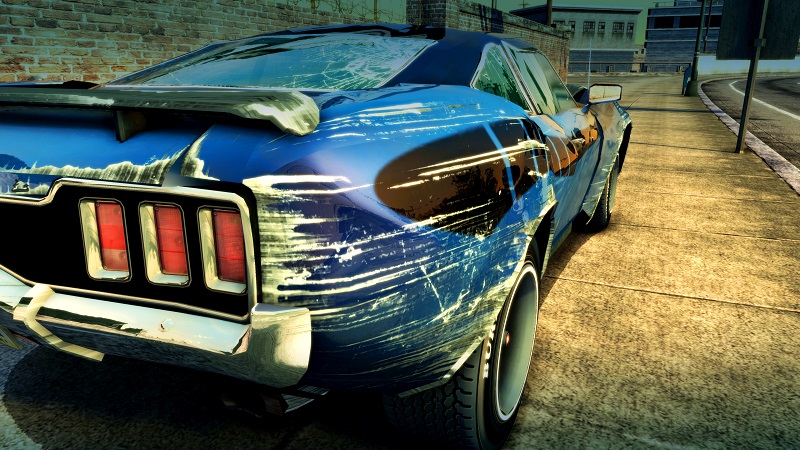
There are two camera angles including a first-person perspective without any bodywork shown and a third-person viewpoint that is positioned an appropriate distance away from the car or motorbike. Remastering Burnout Paradise would have been a golden opportunity to introduce all-new camera angles such as a driver’s eye cockpit view from inside the car or on the motorbike showcasing unique steering wheels or handlebars and dashboards, a bonnet camera positioned to show the bonnet’s bodywork and a helicopter camera angle for a spectacular aerial view of the racing action to the backdrop of the open-world environments.

It is disappointing not to see a Vita release of Burnout Paradise Remastered after the excellent retail releases for Burnout Legends and Burnout Dominator on PSP, although the consolation is remote play. Burnout Paradise Remastered’s remote play performance is fairly good as the graphics and general performance is of the same quality as the PS4 version, although there were some audio glitches that became very pronounced when playing through headphones during remote play. Rather disappointingly, the controls have not been optimised as accelerating and braking are mapped by default to the right and left of the rear touch pad respectively, while displaying the map has moved to the touch screen. Burnout Paradise Remastered is still a playable remote play experience, but it speaks volumes to the lack of remote play refinements that both Burnout games on PSP have more comfortable control schemes, despite having less buttons and only one analogue stick.
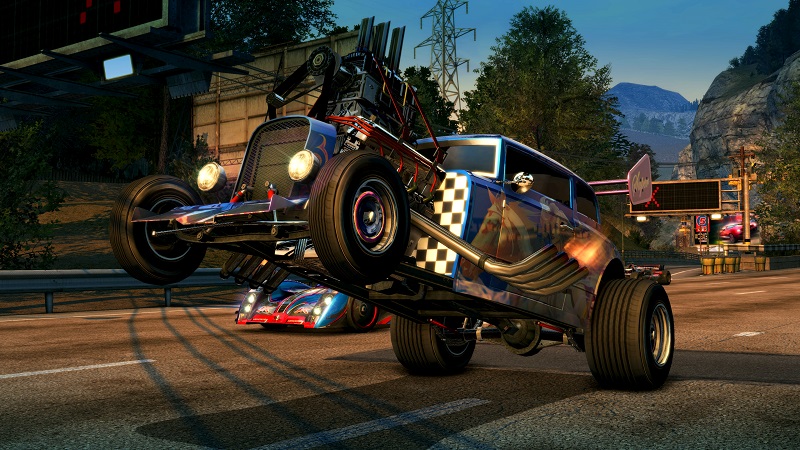
The controls are well mapped to the DualShock 4 controller, although they are not customisable. The control scheme consists of holding R2 to accelerate; pressing L2 to brake or reverse; pressing X to engage the boost; pressing L3 to switch between boost types, hover or beep a horn on applicable vehicles; pressing square to apply the e-brake; pressing triangle to change camera angles; pressing L1 to look behind your vehicle; pressing L1 and R1 simultaneously to enter crash mode; pressing R1 to select the next song on the soundtrack; pressing right on the d-pad to open and navigate through the easy drive online multiplayer menu; moving the direction of the left analogue stick to the left or right to steer your vehicle accordingly; moving the direction of the right analogue stick forwards, backwards, left or right to appropriately manoeuvre the third-person camera angle to look in that direction; pressing the share button takes you to the share feature menu; and pressing the options button to display the pause menu. Tapping the touch pad displays the map, while vibration occurs when colliding with obstacles or vehicles and driving along uneven surfaces for your vehicle’s tyres such as railway tracks. There is no light bar support which could have provided an alternative HUD relating to your vehicle’s condition or how close the player is to achieving your objective of winning a race or completing a particular amount of takedowns on competing vehicles.
https://www.youtube.com/watch?v=xaTy_zM4W1w
Graphically, Burnout Paradise technically holds up even after a decade, although the Remastered release on home consoles is an enhanced version of the high-end PC release of Burnout Paradise: The Ultimate Box instead of a simple direct port of the PS3 version to PS4. There are a variety of graphical improvements including clearer textures, better anti-aliasing, enhanced shadow filtering and more besides on PS4 and PS4 Pro, while the highlight of the enhancements has to be 4K resolution output on PS4 Pro. However, there is seemingly no super-sampling or HDR support. Meanwhile, there is no PlayStation VR support which would have taken Burnout Paradise Remastered to the next level by increasing its immersion in a similar fashion to that of Driveclub VR.
Burnout Paradise Remastered’s presentation is solid with a mostly great user interface across various menus such as the main menu, game modes menus, vehicle selection menus, party mode local multiplayer menus, easy drive online multiplayer menus, options menus and various gameplay menus with support for navigation via the left analogue stick, directional pad and face buttons, although it does not include support for navigation via the right analogue stick and touch pad. Menu backgrounds focus on the Paradise City logo. However, there is one particular shortcoming of the original Burnout Paradise’s user interface that has not been improved upon as Burnout Paradise Remastered does not contain a controller layout diagram.

Burnout Paradise’s Crash FM voice-over is deliberately presented as though you were listening to a radio station dialled in on an in-car stereo in which the presenter DJ Atomika is actually voiced by long-time professional KROQ FM DJ Ted Stryker. Sound effects include the grunting of car and motorbike engines as they powerfully accelerate, alongside engaging turbo boosts, braking, colliding with competing and civilian vehicles or obstacles and surrounding ambience. Burnout Paradise is one of Electronic Arts’ better soundtracks headlined by Guns ‘n’ Roses rather appropriately titled Paradise City with further standouts including the late, great Chris Cornell’s Rusty Cage by Soundgarden, Would by Alice In Chains, Swervedriver’s Duel and Twisted Sister’s I Wanna Rock. There is also a range of instrumental rock music from the original Burnout trilogy, alongside classical music during panoramic views composed by some of the greatest musicians of the classical era such as Bach, Beethoven, Handel, Mozart, Tchaikovsky, Verdi and Vivaldi. There is no DualShock 4 speaker implementation which could have produced DJ Atomika’s voice-over or a focus on both the voice-over and music.
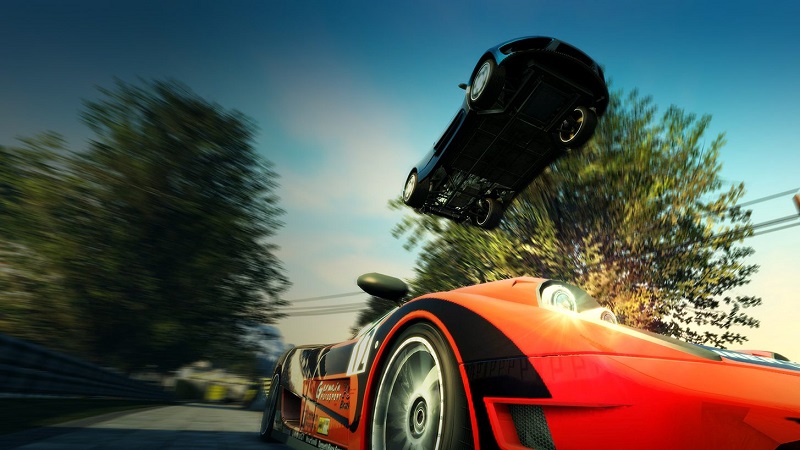
The trophy list includes 95 trophies with 34 bronze trophies, 12 silver trophies and 2 gold trophies required for the platinum trophy, while there are a further 46 bronze trophies covering 8 expansions bundled into the game in order to 100% the trophy list. Easier trophies include the Repair Your Car bronze trophy for driving through any auto repair; the Set A Time Road Rule On Any Road bronze trophy for beating any of the original offline time road rule scores; the Win A Race bronze trophy for winning any offline race; the Perform 3 Takedowns bronze trophy for performing 3 takedowns; and the Visit A Paint Shop to Change Your Vehicle Colour bronze trophy for driving through any paint shop to change the colour of your vehicle. Harder trophies include the Smash 60 Burnout Billboards gold trophy for smashing through 60 Burnout billboards and the Earn Your Burnout Driving License gold trophy for receiving your Burnout driving license. There are 3 online multiplayer trophies towards the platinum trophy including the Jump Over Another Player’s Car bronze trophy for jumping over another player’s car during an online multiplayer event; the Complete 10 Freeburn Challenges silver trophy for completing 10 freeburn challenges; and the 8 Players Meet in the Wildcats’ Baseball Stadium bronze trophy for meeting with 7 other players inside the Wildcats’ Baseball Stadium. It is estimated that depending upon skill and a good trophy guide to provide some helpful tips that it would take between 30 to 40 hours to platinum the trophy list.
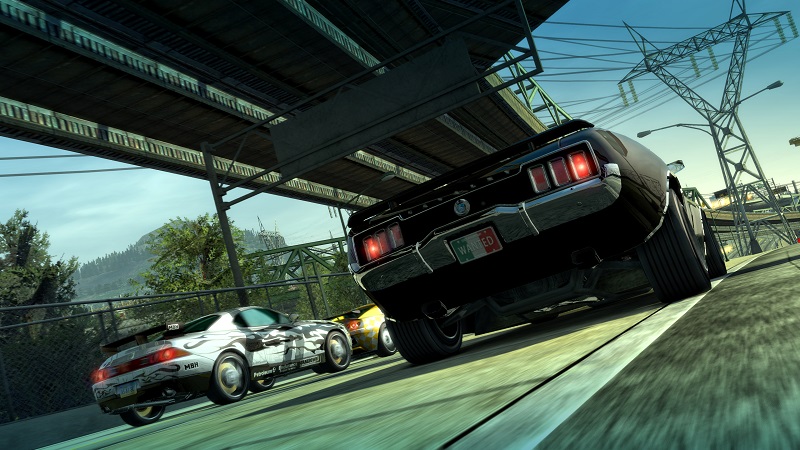
There are no difficulty levels, but there is a noticeable difficulty curve as players will have to perform with fewer mistakes as progression is made from one driver’s licence to another. Newcomers to the Burnout series unfamiliar with the open-world racing of Burnout Paradise will need to learn techniques such as how to ride attempted takedowns on your car from opposing cars, adapting to the intense speed of cars and motorbikes particularly when reaching top speed plus the extra speed from turbo boosts and choosing the best route to maintain as close to a straight line as possible for maximum speed, while picking out oncoming traffic to avoid crashing.
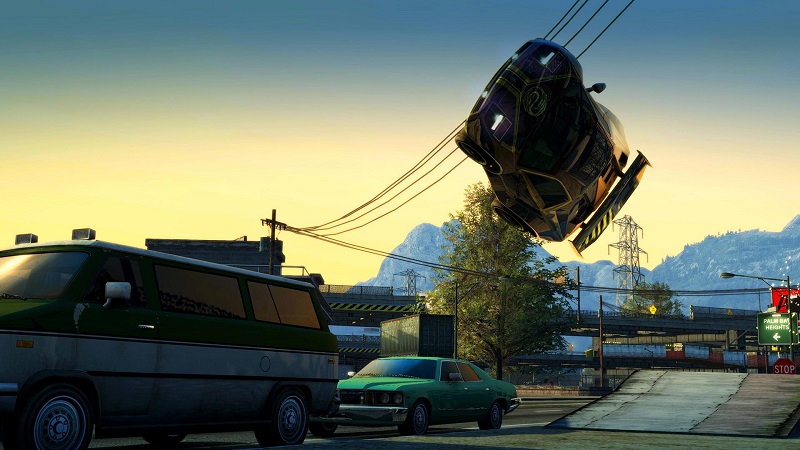
Party mode allows anywhere from 2 to 8 players to participate in up to 8 rounds with every player sharing a single controller as they compete to earn points towards their finishing position in a competitive points scoring table. Every round can be set to random or alternatively players can select a stunt, skill or speed challenge in which skill challenges include driving as far as you can in oncoming traffic within 30 seconds, near missing as many vehicle as possible on the interstate or in a tunnel within 60 seconds and getting as much air time as possible in or around particular environments within 30 to 40 seconds, while speed challenges include smashing two billboards to stop the clock or smashing two billboards followed by driving back to the start line to stop the clock and racing along the interstate to the next tollbooth before accelerating back to the start line, alongside stunt challenges such as successfully landing a jump in a certain location as the dam jump and using split ramps to successfully land a barrel roll. In a twist to party mode’s gameplay; cars are randomly selected for each round with a different livery for each player which results in varying experiences such as a van having more weight in contrast to achieving significant air time.

Party mode goes someway to filling the void of there being no split-screen multiplayer, although split-screen multiplayer could have realistically followed the format of the classic Burnout 3 on PS2. However, given the development time to be able to build upon the original version of Burnout Paradise; it is somewhat surprising to not see split-screen multiplayer added as it was undoubtedly what received the most complaints when the game initially launched.
As was the case upon the original release of Burnout Paradise; Remastered supports 2 to 8 players in online multiplayer with the same quality of performance complimented by every online game mode from the original version and all online game modes that were introduced during post-launch updates and downloadable content such as Cops and Robbers which are easily accessible through pressing right on the d-pad to browse the easy drive menus.
https://www.youtube.com/watch?v=f4JqCmt9hzE
Burnout Paradise Remastered’s replayability originates from Burnout Paradise’s vast quantity of content combined with the Year of Paradise post-launch downloadable content all being contained on the disc resulting in dozens of hours of single player, party mode local multiplayer and online multiplayer gameplay throughout Paradise City, Big Surf Island, smashing through gates and billboards, performing jumps, additional cars and much more besides.
Analysis
- Title: Burnout Paradise Remastered
- Developer: Criterion Games/Stellar Entertainment
- Publisher: Electronic Arts
- System: PS4
- Format: PS4 Blu-Ray Disc/PSN Download
- Cross-Buy: No
- Cross-Play: No
- Players: 1-8 (Pass the Controller Party Mode)/2-8 (Online Multiplayer)
- Hard Drive Space Required: 7.8GB
